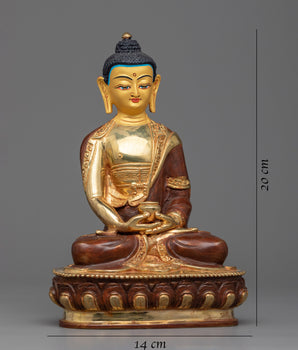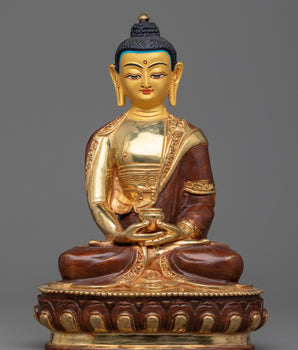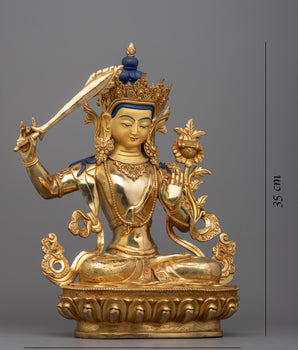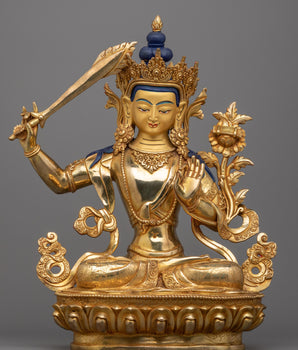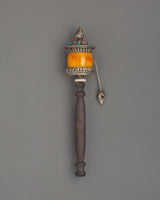
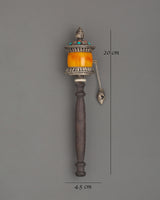
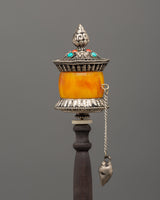
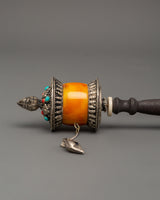
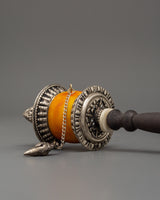
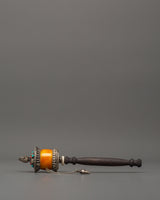
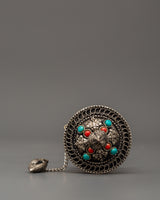
Tibetan Prayer Wheel with Amber | Perfect for Meditation, Rituals, and Spiritual Energy Flow

100% AUTHENTIC

HANDMADE

FREE SHIPPING
Tibetan Prayer Wheel with Amber | Perfect for Meditation, Rituals, and Spiritual Energy Flow
--------------------------------------------------------
Size: 20cm(Height) x 4.5cm(Width)
Weight: 0.058kg
Materials: Brass, Copper, Wood, Artificial Stones: Turquoise, Coral, Amber
--------------------------------------------------------
About our Prayer Wheel
This exquisitely carved Tibetan Prayer Wheel is a precious spiritual item for purifying karma, cleansing negativity, and fostering compassion. It is 20cm in height and 4.5cm in breadth and is both lightweight and substantial, making it perfect for portable meditation and daily mantras. The core drum is inlaid with warm amber stone, representing clarity and healing energy. At the same time, the top is embellished with elaborate brass detailing and delicate turquoise and coral stones, which are thought to provide spiritual protection and balance.
Prayer wheels have been an essential feature of Tibetan Buddhist ceremonies for millennia. Spinning the wheel clockwise while chanting or meditating releases the prayers stored within, resulting in a tremendous resonance that raises the soul and provides calm. This prayer wheel is made of traditional materials like brass, copper, and wood, and it features a bit conch weight at the end of a chain to enhance the spin and rhythm while in use. The wood and shining metal mix perfectly balances earthy grounding and spiritual meaning.
Introduction to Prayer Wheel
A prayer wheel is cylindrical on a spindle and is used in Tibetan Buddhism. It is typically inscribed with the mantra "Om Mani Padme Hum" and rotated by hand as a form of spiritual practice and to accumulate merit. Spinning the wheel is believed to have the same spiritual benefits as verbally reciting the mantra. The use of prayer wheels is widespread in Tibetan Buddhism and has spread to other cultures.
How does the Buddhist Prayer Wheel benefit us?
The benefits associated with rotating the wheel are numerous. It promotes knowledge, compassion, and bodhicitta in the practitioner and improves siddhis (spiritual powers such as clairvoyance, precognition, etc.). The practitioner can repeat the mantra as often as possible while the wheel is rolling, maintaining a calm, meditative attitude. A Tibetan Buddhist tradition holds that after a practice session, one should dedicate any acquired merits to the benefit of all sentient beings. Then three times Om Ah Hum. This is usually among Tibetans after finishing any Buddhist practice, including the prayer wheel exercise.
How do you set up your own Buddhist Shrine?
• Find a clean, quiet, and uncluttered spot
• Set up an altar table and cover it with an altar cloth that calls to you
• Place your sacred item at the center












